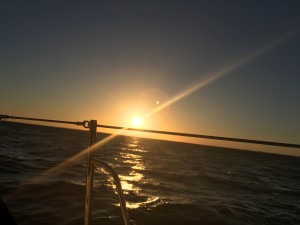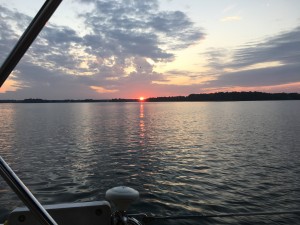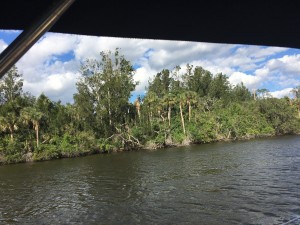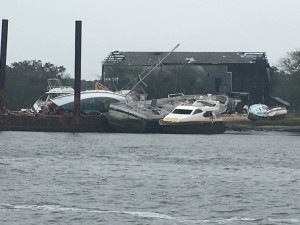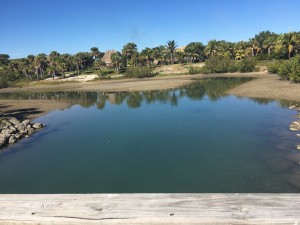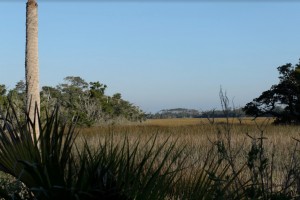“The meaning of life is to find your gift. The purpose of life is to give it away.” ― Pablo Picasso
Season’s Greetings! In this blog, I will recap a few memories of Tusen Takk’s trek from Charleston, SC to Miami, FL and share some ideas for this season of giving and how you can join a movement of people committed to restoring a healthy planet.
I had a 170-nautical mile, relatively calm, 36-hour sail from Charleston, SC to Amelia Island off Fernandina, FL with 5 to 10 knot Northeast winds and 2 to 3 foot following-seas. This was the
second calm ocean passage since the leg from Portsmouth, NH to Gloucester, MA that I did with my sister in early October. I also had a solo, through-the-night 130-mile trek from Cape Canaveral to Palm Beach with 20 to 25 knot Northwest winds and a following sea. It was great fun having 8 foot seas lift Tusen Takk up and then push her forward hitting 9 to 10 knots over ground – and all from kinetic wind and wave energy. Pretty cool!
I have three fond memories of this leg of my journey: two sailing alone at sea at night and one meandering along the salt-water marshes of the Intracoastal Waterway (ICW). My first memory, is the companionship of stars and constellations that slowly appear in twilight and grow eagerly more
brilliant as the last remnants of sunlight fade into darkness. With no to-do-list distracting my attention, I was free to be fully present to the wonder and magnificence of a planetarium coming to life with its edges framed solely by a horizon of ocean and forming a perfect shaped dome with 2,000 pin pricks of varying light intensity shining through a purplish-black canopy; the movement of these same stars and constellations across the sky as they came to life to tell their stories to one eager to listen; and the whooshing-sound of Tusen Takk’s hull displacing her weight in water as she lunged forward while rocking back and forth in rhythmic motion.
Another night-sailing memory is a kinship shared with dolphins. Several times during the night I received the blessing of dolphins suddenly showing up to surf Tusen Takk’s bow and stern waves. When I was tempted to feel alone, seemingly out of nowhere, a pod of 12 or so bottlenose dolphins would suddenly appear and follow along for a half hour to an hour sometimes. I found myself reaching out and talking to them, and in response they would perform a synchronized water-ballet while drafting the wake of Tusen Takk’s bow and stern. These intelligent, fun-loving creatures have so much to teach us about how to live in harmony with others and our natural environment. It’s easy to feel an affinity for and sense of kinship with them. I long to have that love and connection impel a concern from all of us – a love that drives sensible policy to protect them and other marine (and land-based) species that are threatened by climate change and ocean pollution.
One of the reasons I sailed through the night was to have more time to spend in natural areas. Two stretches of the ICW stand out: a 20-mile trek through a salt-water estuary between Edgewater and
Cape Canaveral and a 10-mile stretch through the Canaveral Canal which leads out to the Atlantic. Along these stretches of wild, scenic wetlands, it was easy to imagine what Florida looked like a few hundred years ago when the Seminole people sustainably shared the land and water with their fellow creatures, not trying to dominate and develop, but simply to live in harmony with all life and in rhythm with seasonal and natural cycles. These beautiful areas are a birders paradise with egrets, herons, ibises, kingfishers, pelicans, terns and others making a living off rich wetland habitats. And if one gets tired of peering through the lens of avian-seeking-binoculars, there are manatees, alligators, and dolphins vying for one’s attention as well.
While traveling on the ICW, I also saw countless battered-boats strewn along the shores, and docks and roofs destroyed by Hurricane Irma – destruction exacerbated by climate change. In addition to being nature’s nurseries and breeding grounds for aquatic life, wetlands also serve as buffer zones absorbing the energy of storm-water surges. Most of these natural buffer zones, however, have been developed into homes, golf courses, businesses and hotels – many of which are built only a foot or two above water level. And with sea level rising and hurricanes intensifying due to increasing air and water temperatures, I had to wonder if observation and pragmatism were stronger than denial…
Did you know that in the continental United States, estuaries comprise more than 80 percent of the coastline along the Atlantic Ocean and Gulf of Mexico, and more than 10 percent of the Pacific coastline. Leaving these spaces undeveloped will create healthier oceans and provide protection from the increasing frequency and strength of future storms.
I also spent a magical day visiting the John D. MacArthur State Park in North Palm Beach, Fl. The state parks in Florida brand themselves as “the real Florida.” I love it. This park is an “island in time,”
preserving the lush sub-tropical habitats that once covered southeast Florida. The 428-acre park was donated by John D. MacArthur who wanted to preserve it for future generations to enjoy. There are paths that wind through a forest of gumbo limbo, mastic, cabbage palm, strangler fig and other tropical and subtropical trees before opening onto a protected beach along the North Atlantic (Note: protected from development, but not from the onslaught of ubiquitous plastic washing up on shore). There are red and black mangrove trees with leg-like roots stepping out into the estuary and underwater meadows of seagrass and algae. Our state and national parks and preserves provide a respite from our frenetic built-world and a reminder that we are all interconnected in a delicate web of life: that we are a part of nature and nature is a part of us.
Did you know that Red Mangrove trees can filter out salt by reverse osmosis, only allowing fresh water to enter their systems. Nature is pretty cool and we have much to learn from her 4 billion years of ecological design.
A Season of Giving
As we all know, this time of year engenders a desire and practice of giving. But the world doesn’t need more packaged stuff clogging our landfills and polluting our oceans. How can we give a gift that doesn’t pollute? How can we include nature in our giving? How can a gift be zero waste and continue to give for generations to come? We simply need to re-imagine what the word gift can mean. So here are a few ideas:
Christmas, Hanukkah, birthdays, graduations, other holidays and special occasions invite gifts as symbols of our love and admiration for someone. But what if the gift weren’t material? What could that look like? Well, a variety of possibilities await our imagination, including:
- Join a cause/non-profit you believe in (this is sweeter than simply sending a check off as it also elicits the gifts of our active involvement and contributions). Note: nothing wrong, however, with financially supporting an organization you believe in.
- Give a gift of time spent together with people you care about – a family trip, for example.
- Give a homemade gift – create a recipe book or give cuttings from your favorite plant, etc.
- Re-gift movies, books, music, clothing, jewelry, etc.
- Give services like a home-cooked meal or tickets to a concert or free lessons for a skill that you have (teach someone how to play the guitar, for example).
- And if you want to purchase a more traditional gift, check out DoneGood to find companies that are committed to doing good for the planet and society.
Ok, so there is a plethora of organizations that one can join. As this blog focuses on climate action and ocean conservation, we are highlighting several organizations below that may or may not be on your radar. These are organizations that Sue and I work with, deeply respect, and would encourage you to consider partnering with as well!
Citizens Climate Lobby (CCL) is a non-partisan international grassroots group that trains and supports volunteers to build relationships with their elected officials to promote sensible climate and energy policy. They emphasize a respectful approach to climate education by building upon shared values rather than partisan divides, and empowering supporters to work on concerns to their local communities. They work on the adoption of fair, effective, and sustainable climate change solutions. To find a CCL chapter in your area, check out this link.
Blue Frontier www.bluefront.org has worked for 15 years to provide the coalition building tools needed to promote solution-oriented leadership that can protect our living seas and our communities both human and wild. All that progress is now being threatened by an administration and Congress that view our public seas as little more than a gas station and garbage dump. That’s why they launched the #MarchForTheOcean with over 50 partner groups (see www.marchforocean.com). On Saturday June 9, 2018 they’ll wear blue for the ocean and march for the ocean in Washington D.C. and in sister marches around the nation and our blue world. Learn more about them and about how you can be part of the next wave of change by visiting these two websites or contacting them directly at info@bluefront.org or marchforocean@gmail.com (Contributed by David Halverg – Founder of Blue Frontier).
350.org—is dedicated to building a global grassroots climate movement, to stopping polluting fossil fuels and to building 100% renewable energy solutions. You can join their efforts to organize for a fossil free world here. 350 uses online campaigns, grassroots organizing, and mass public actions to oppose new coal, oil and gas projects, take money out of the companies that are heating up the planet, and build 100% clean energy solutions that work for all. There are many local groups around the globe – including, in the state of Maine, 350 Maine, dedicated to solving the planetary climate crisis…locally.
One great way for youth to get involved is to join an active campaign with Our Children’s Trust. Working to amplify the voices of future generations who are speaking out to demand that the planet be protected for them; they are insisting that laws be put in place to reduce greenhouse gas emissions. There are opportunities all around the country for you to join in this work through public education and civic engagement to make sure the future is bright (Contributed by Bob Klotz and Sarah Lachance).
Stay tuned: Our next blog will focus on “Stories of Hope.”
To subscribe to (or unsubscribe from) these blog posts, write to jonathan@cellonline.org.
*CELL is currently accepting applications for college sustainability focused study abroad programs, to Iceland, Central America, Ecuador, and Scotland. Faculty may contact CELL regarding custom programs for your college. Go to cellonline.org for more information and to apply.”

